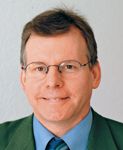- Acne
- Actinic Keratosis
- Aesthetics
- Alopecia
- Atopic Dermatitis
- Buy-and-Bill
- COVID-19
- Case-Based Roundtable
- Chronic Hand Eczema
- Chronic Spontaneous Urticaria
- Drug Watch
- Eczema
- General Dermatology
- Hidradenitis Suppurativa
- Melasma
- NP and PA
- Pediatric Dermatology
- Pigmentary Disorders
- Practice Management
- Precision Medicine and Biologics
- Prurigo Nodularis
- Psoriasis
- Psoriatic Arthritis
- Rare Disease
- Rosacea
- Skin Cancer
- Vitiligo
- Wound Care
Article
New class of UV absorbers emerging
New Orleans — An emerging new class of organic, insoluble UV absorbers shows promise in providing improved broad-spectrum UVB and UVA sunscreen protection and meets the increasing demand of consumers and dermatologists, according to chemist Uli Osterwalder. He reports that the first representative of this UV absorber — bisoctrizole — has been used in sunscreens in European countries for five years and is now being submitted to the U.S. Food and Drug Administration (FDA) for approval.

Mr. Osterwalder is a scientific advisor for suncare products made by Ciba Specialty Chemicals, Inc., Basel, Switzerland. The company formulates and sells sunscreen actives - including bisoctrizole - to sunscreen manufacturers. He and colleagues presented a poster on the topic at the 63rd Annual Meeting of the American Academy of Dermatology (AAD), here. Their poster explained this new class of UV absorbers, specifically bisoctrizole. Because this new class of UV absorbers is insoluble and because it absorbs, scatters and reflects UV light, skin protection is improved, Mr. Osterwalder says.
"With our poster, we are giving the U.S. dermatologists literally some first-hand information about this new class of UV filter," he says.
Why effective? One factor that makes this new UV absorber so effective is its small particle size. This new class of sunscreen actives contains microfine particles of between 10 nm and 500 nm that are dispersed in an aqueous or oily medium. Such small particles improve the sunscreen's uniform skin coverage as well as UV absorption performance.
Use of spectroscopy Mr. Osterwalder and colleagues used spectroscopy to determine particle size of sunscreens containing bisoctrizole.
Their findings, "supported the understanding of the use of particles in UV protection and that particle size determines the quality and quantity of UV absorption," he says. "There is an optimum particle size for broad range coverage, high absorption and good transparency in the visible range."
He explains that use of spectroscopy, "is a powerful method to characterize sunscreens without having to go through biological endpoints, such as erythema, tanning or others. The dermatologist learns the characteristics of a good sunscreen."
Previously, there have been only two classes of UV filters: soluble/organic and insoluble/inorganic. Bisoctrizole is insoluble/organic.
The list of soluble/organic filters includes octinoxate, oxybenzone or avobenzone, which only absorb UV radiation. The insoluble/inorganic filters are titanium dioxide and zinc oxide, which absorb, scatter and reflect UV radiation.
Benefits Among the benefits that bisoctrizole can offer sunscreens is its photostability over time and its broad-spectrum UVA coverage, especially the broad coverage of the UVA1 region, between 340 nm and 400 nm. Bisoctrizole alone has a critical wavelength of 388 nm and a UVA/UVB ratio of 1.0.
Mr. Osterwalder notes the efficient UVA1 protection provided by bisoctrizole. He defines this "efficiency" in three areas:
"With bisoctrizole, it is possible to manufacture sunscreens that are cosmetically acceptable with sufficient, reliable UVA protection," Mr. Osterwalder says. "Cosmetic acceptability is crucial for good compliance. The best sunscreen in the world is not efficient if it is not used properly."
Newsletter
Like what you’re reading? Subscribe to Dermatology Times for weekly updates on therapies, innovations, and real-world practice tips.













